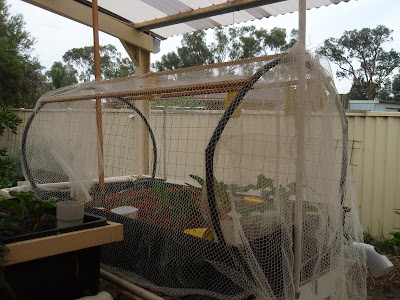I thought I knew something about the 'Dig For Victory' campaign in England during the Second World War, and about the garden allotment system. Well, I did know it on an intellectual level. What it really meant on an immediate and personal level to the population is something I have just gained some small understanding of through reading a book called
Your Garden In Wartime by C.H. Middleton.
Middleton had a gardening program on the radio in the 1940s and during the war many of his programs were about growing food as part of the war effort. Some of the talks were subsequently published as this book, re-released a couple of years ago. It is a charming, nostalgic, very, very British compilation of jobs to do throughout the year. It is bitter-sweet in many regards, really bringing home the deprivations suffered by all to a basic level of trying to ensure an adequate food supply. Some of the advice is now known to be very wrong (calcium cyanide as a fertiliser, for example) and most of it is relevant only to the northern hemisphere.
It is not a book to read for its advice, though there is enough still relevant, and relevant to us in the southern hemisphere, with a bit of juggling of times and measurements, to justify spending time reading it. To me, it is more of a historical record of the gardening ethos during those bleak years.
Basic produce such as potatoes and onions were in short supply as a lot of Britain's supply had come from Europe, even the seeds for many vegies were formerly produced in Europe. There is a great deal of detail about growing potatoes and onions and methods of sharing seeds. Middleton often cautions people against buying more seed than they can use as this will mean others do without.
He gives credit to seed suppliers and nurserymen. The first for continuing to be able to keep up supply of most seeds and for being able to still produce catalogues, despite the shortage of paper. The latter for their patriotism in uncomplainingly digging up their life's work, of rose growing for example, to turn their land over to growing potatoes.
On the subject of potatoes, the author at one point says that Hitler and his U-boats can do their worst, we will be all right if we grow enough potatoes to keep ourselves fed. Winning the war with potatoes!
While encouraging people to turn most of their flower gardens into vegie gardens, he repeatedly says not to forego flowers altogether because of the cheerfulness they bring to our lives, which we all need in these dark times. He says that next summer, Hitler or no Hitler, he is going to be naughty and grow some sweet peas, because he missed them last year and is sure he is a better man for having a vase of sweet peas to enjoy. I know, it's totally corny, but still brought tears to my eyes to think of the death, destruction and deprivation suffered by so many when we take so much that is good in our own lives for granted.
The book is full of things that are 'jolly lucky' or 'grand', such old-fashioned words and sentiments you have to smile.
I think I have found out, at last, why there is so much advice around to thin tomato plants by picking out the young side shoots as they appear. In 40 years of gardening, I have never done this. Call me lazy if you will, but I've never seen the point when tomatoes produce so prolifically without removing side shoots. Also, the extra foliage can act as sun protection and prevent fruit from becoming burnt in our hot summers. I think I have read about someone (was it Clive Blazey from Diggers Seeds?) who did proper tests to determine the usefulness of this practice and found it to be unnecesary.
Anyway, in Britain, the climate is so unfriendly towards tomatoes that they have to do a lot of growing and fruit producing in a very short time. The removal of the side shoots allows the plants to put more energy into fruit production. I was astounded to read that tomatoes grown outdoors might produce only four nice trusses of fruit! I'm not sure I would put in all the effort he describes to end up with only four trusses of fruit per plant.
This was meant to be a brief mention of what I found to be a very worthwhile read. I'm sure it will interest other gardening obsessives. My copy came from the library, but I think I'm going to have to buy one. It will be one of those books to return to again and again for its charm and nostalgia.






